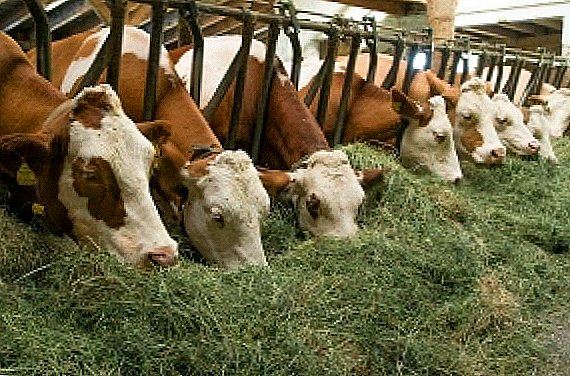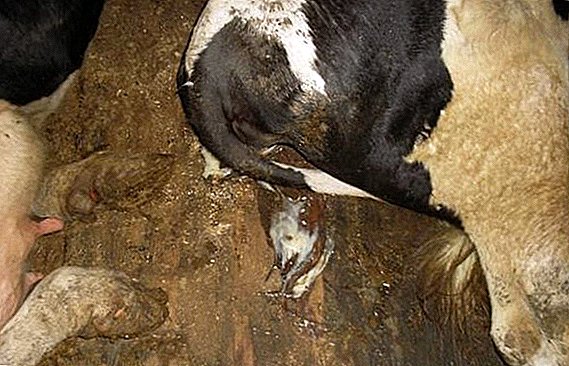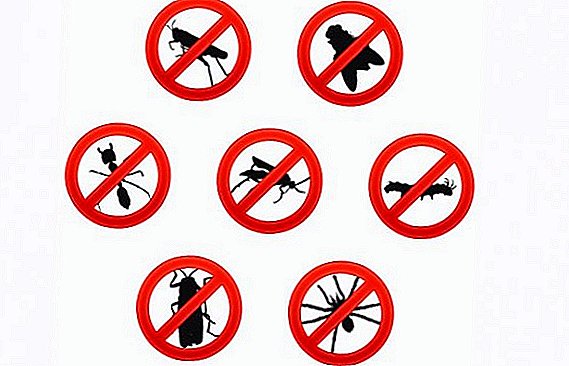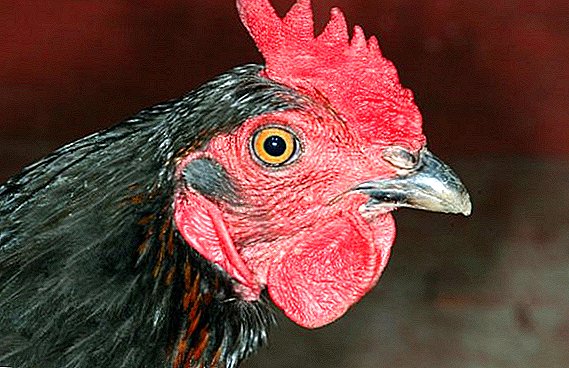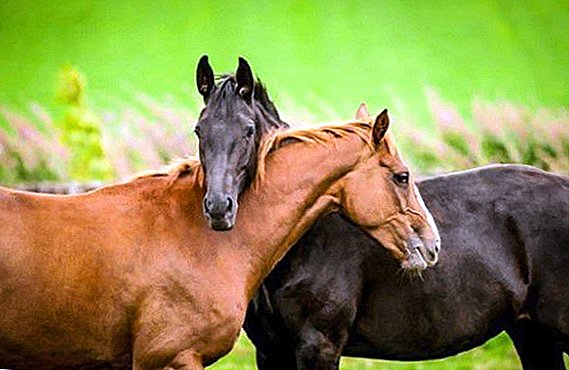 The pedigree of horses stretches back centuries. For 50 million years, an animal, not exceeding the size of an ordinary dog, has become a big horse. Without it, it is impossible to imagine some episodes from the past of our civilization: the migration of nations, the famous battles and the conquest of entire countries. Of course, the domestication of these animals did not happen for several years: this will be discussed in our article.
The pedigree of horses stretches back centuries. For 50 million years, an animal, not exceeding the size of an ordinary dog, has become a big horse. Without it, it is impossible to imagine some episodes from the past of our civilization: the migration of nations, the famous battles and the conquest of entire countries. Of course, the domestication of these animals did not happen for several years: this will be discussed in our article.
Long ancestors of horses
The horse made a long path of development under the influence of environmental conditions, changing in appearance and internal qualities. The ancient ancestors of horses are forest dwellers living in the first half of the Tertiary period in tropical forests. They found food in the forest, to the life in which they were adapted.
The development of the horse's ancestors occurred during this period of time in the direction of increasing their size, complication of the dental apparatus and the formation of the ability to move on three fingers.
We advise you to read about where wild horses live.
Along with this, the middle finger was larger and took on the main load, while the side fingers contracted and became shorter, retaining the role of additional support, which made it possible to move on loose earth.
Eogippus and chiracotherium
Eogippus appeared in North America about 50 million years ago - it was a small size, similar to a tiny animal tapir. He lived in impenetrable forests, bushes, hiding from enemies in ferns and tall grass.  His appearance did not look like a modern horse. There were fingers on the limbs of the animal, instead of hooves, moreover, there were three in the rear ones, and four in the front ones. The eogippus skull was elongated. The height at the withers of its various representatives ranged from 25 to 50 cm.
His appearance did not look like a modern horse. There were fingers on the limbs of the animal, instead of hooves, moreover, there were three in the rear ones, and four in the front ones. The eogippus skull was elongated. The height at the withers of its various representatives ranged from 25 to 50 cm.
In the forests of Europe in the same period of time lived a close relative of the Eo-Hippus - chiracotherium. From him occurred, as scientists believe, the current horse. With four fingers on the front hoofs and three on the back, in size, it resembled eogippus. The head of the chiracterium was relatively large, with an oblong and narrow muzzle and lumpy teeth.
Important! In any work with horses, you must wear a protective helmet and special shoes.
Meso-hippuses and anchitheria
Thousands of years passed, time and landscape changed. In areas where until recently there were swamps, grassy plains appeared. Something like this was the relief in the Little Bedlands area in the current state of Nebraska at the time of the early Miocene. These edges and became the birthplace of meso-hippus. In the early Oligocene, the meso-hippuses lived in large herds.
In size, they resembled current wolves and were divided into species. Their front legs were elongated, at their ends were four fingers, and on the back - three. The height of the animals was 60 cm. The main teeth were without cement - this indicates that the meso-hippuses ate only plant food.  Molars covered with strong enamel. It is also certain that the meso-hippuses were much more developed than the eo-hippuses. This was reflected in the modification of the shape of absolutely all the teeth. Meso-hippuses were trotting - a method that was flawlessly tested by current horses. It is also associated with a change in the situation of their life: the swampy mountains became green plains.
Molars covered with strong enamel. It is also certain that the meso-hippuses were much more developed than the eo-hippuses. This was reflected in the modification of the shape of absolutely all the teeth. Meso-hippuses were trotting - a method that was flawlessly tested by current horses. It is also associated with a change in the situation of their life: the swampy mountains became green plains.
Did you know? In Finnish, the term "horse" is considered offensive, and the term "horse" - affectionate. Every finke will be pleased when her husband says, "You are my magnificent horse!"
Pliogippus
In America, in the Pliocene, the first single-fisted horse, the plio-hippus, emerges. It gradually became widespread in the steppes of Eurasia and America, which were then connected by an isthmus. Her siblings spread all over the world and replaced absolutely all three-fingered representatives.
Plio-hippus had large teeth with crests of enamel and cement filling the grooves between the folds. This creature was a characteristic representative of the steppes, it was distinguished by its great growth, it was based mainly on the middle finger, since the first, second, fourth and fifth fingers were reduced.  A large number of remains of ancient horses were recorded in America: because of its complete glaciation in the Ice Age, they died there. In Asia, where glaciation was less so, and in Africa, where it was not there at all, wild relatives of horses have survived to modern times.
A large number of remains of ancient horses were recorded in America: because of its complete glaciation in the Ice Age, they died there. In Asia, where glaciation was less so, and in Africa, where it was not there at all, wild relatives of horses have survived to modern times.
Check out the description of the best horse suits.
Primitive horses
At the end of the final glacial period, 10 thousand years ago in Europe, Northern and Central Asia, a huge number of horses grazed, which belonged to the wild. Making the transitions, the length of which was hundreds of kilometers, their herds wandered the steppes.
Their number has decreased due to climate change and lack of pasture. Zebras, donkeys, half-horses, Przewalski's horse and tarpan are ranked as wild relatives of horses. Zebras live in the forest of Africa. They stand out with a striped color, gather in herds, mobile, poorly tamed, poorly mastered in a foreign area.
From the crossing of horses and zebras come barren hybrids - Zebroids. They have a head of impressive size, huge ears, a short-haired mane with no bangs, a small tail with a hair tassel at the tip, very thin legs with thin hooves.  Zebroid Wild donkeys are divided into two types - Abyssinonubian and Somali: the first is small, light, the second is bigger, of a dark color. They lived in Northeast Africa, were one-colored suit, with a large head and ears, a short mane. They have a roof-like croup, small tail, small thin hooves.
Zebroid Wild donkeys are divided into two types - Abyssinonubian and Somali: the first is small, light, the second is bigger, of a dark color. They lived in Northeast Africa, were one-colored suit, with a large head and ears, a short mane. They have a roof-like croup, small tail, small thin hooves.
Did you know? Horse is a holy animal for 23 nations. In North Africa and the Middle East, they are most revered because they cannot do without them.Halfgrains live in semi-desert steppes of Asia. They have a yellow color and small ears.
There are several types of these animals:
- kulancommon in the semi-deserts of Central Asia;
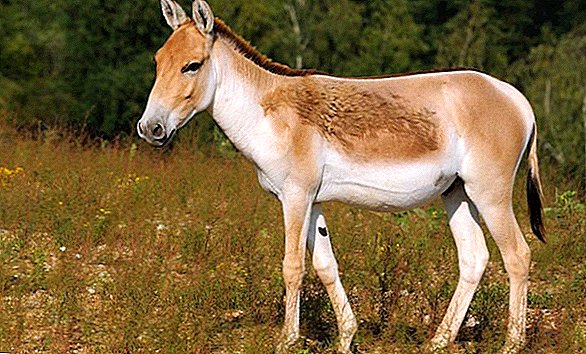
- onager, popular in the semi-deserts of Northern Arabia, Syria, Iraq, Iran, Afghanistan and Turkmenistan;
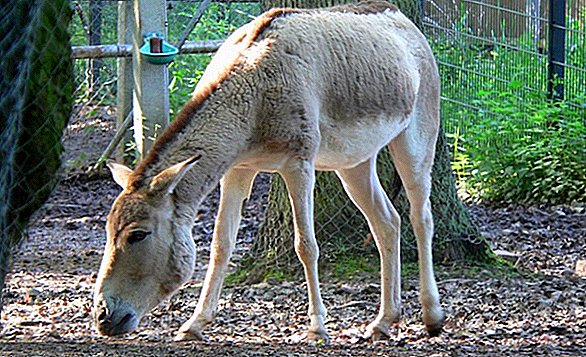
- kiang - the most impressive in terms of size half live in Tibet.
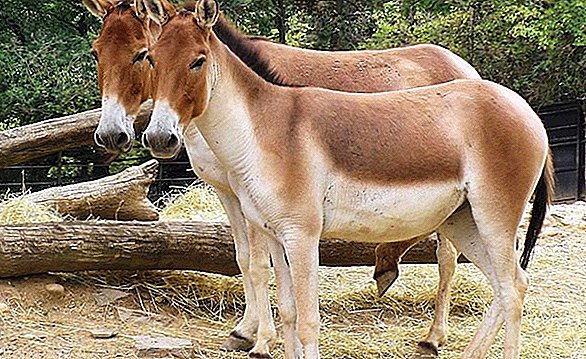
N. M. Przhevalsky in 1879 opened a wild horse, which would later bear his name. This species lives in the steppes of Mongolia.
Learn more about the Przewalski horse.
It has a list of differences compared to a domestic horse:
- she has huge teeth;
- withers less pronounced;
- short-haired standing mane, without bangs;
- hair grows under the lower jaw;
- limbs thin;
- large hooves;
- rough build;
- Mouse suit.
These representatives prefer to stay in groups. The height of an adult individual ranges from 120 to 140 cm at the withers. If you cross with domestic horses, it gives fertile hybrids. Tarpan - the disappeared predecessor of the modern horse.  Przhevalsky's horse Animals of this species were not very tall, only 130-140 cm at the withers, and their weight was about 300-400 kg. The species was distinguished by a stocky physique, a large enough head. Tarpans had very lively eyes, wide nostrils, a large neck and short, well mobile ears.
Przhevalsky's horse Animals of this species were not very tall, only 130-140 cm at the withers, and their weight was about 300-400 kg. The species was distinguished by a stocky physique, a large enough head. Tarpans had very lively eyes, wide nostrils, a large neck and short, well mobile ears.
History of the domestication of horses
Zoologists disagree on the date of domestication of horses. Some believe that the process begins from the moment people began to control breeding of breeds and animal multiplication, while others take into account the modification of the horse's jaw structure, resulting from labor for the benefit of man, the appearance of horses on artifacts.
Based on the analysis of fishing on the teeth of ancient stallions, as well as changes in the lives of people who were engaged in their breeding, horses were domesticated by the beginning of the 4th millennium BC. er The warlike nomads of Eastern Europe and Asia were the first to use horses for combat purposes.
Read more about how to breed horses at home.
In 1715 BC. er The Hyksos, who conquered Egypt, used a horse-drawn chariot in a duel. Soon such transport began to be used in the army of the ancient Greeks. Over the next three thousand years, the horse’s main purpose was his assistance in moving in a war.  With the use of a saddle, riders made it easier to apply the speed properties of the animal. The tribes of the Scythians carried out horse raids, the Mongolian conquerors also used animals to conquer China and India. The Huns, Avars and Magyars also raided Europe.
With the use of a saddle, riders made it easier to apply the speed properties of the animal. The tribes of the Scythians carried out horse raids, the Mongolian conquerors also used animals to conquer China and India. The Huns, Avars and Magyars also raided Europe.
In the Middle Ages, horses began to be used in agriculture, where they became a substitute for slower oxen. In order to transport coal and various goods, ponies were used that were more suitable for such works. With the improvement of roads horses became the main means of moving in Europe.
So, strong animals have spread almost around the world, adapting to different climates. The factors that increase the popularity of horses are the ability to transport large loads, fast running, the ability to survive in many climatic conditions, and in addition, appearance, elegance and grace.
Changed era, changed the purpose of horses. But, like many years ago, a horse for a man is not only a means of transportation or a pulling force, but also a loyal companion.





